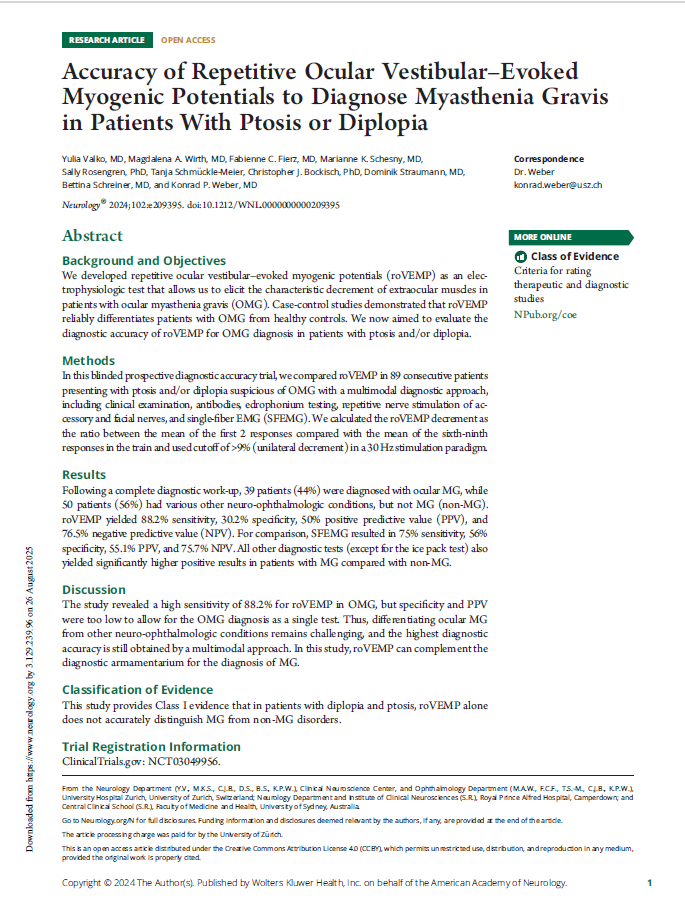Accuracy of Repetitive Ocular Vestibular–Evoked Myogenic Potentials to Diagnose Myasthenia Gravis in Patients With Ptosis or Diplopia
May 2024
Abstract
Background and Objectives
We developed repetitive ocular vestibular–evoked myogenic potentials (roVEMP) as an electrophysiologic test that allows us to elicit the characteristic decrement of extraocular muscles in patients with ocular myasthenia gravis (OMG). Case-control studies demonstrated that roVEMP reliably differentiates patients with OMG from healthy controls. We now aimed to evaluate the diagnostic accuracy of roVEMP for OMG diagnosis in patients with ptosis and/or diplopia.
Methods
In this blinded prospective diagnostic accuracy trial, we compared roVEMP in 89 consecutive patients presenting with ptosis and/or diplopia suspicious of OMG with a multimodal diagnostic approach, including clinical examination, antibodies, edrophonium testing, repetitive nerve stimulation of accessory and facial nerves, and single-fiber EMG (SFEMG). We calculated the roVEMP decrement as the ratio between the mean of the first 2 responses compared with the mean of the sixth-ninth responses in the train and used cutoff of >9% (unilateral decrement) in a 30 Hz stimulation paradigm.
Results
Following a complete diagnostic work-up, 39 patients (44%) were diagnosed with ocular MG, while 50 patients (56%) had various other neuro-ophthalmologic conditions, but not MG (non-MG). roVEMP yielded 88.2% sensitivity, 30.2% specificity, 50% positive predictive value (PPV), and 76.5% negative predictive value (NPV). For comparison, SFEMG resulted in 75% sensitivity, 56% specificity, 55.1% PPV, and 75.7% NPV. All other diagnostic tests (except for the ice pack test) also yielded significantly higher positive results in patients with MG compared with non-MG.
Discussion
The study revealed a high sensitivity of 88.2% for roVEMP in OMG, but specificity and PPV were too low to allow for the OMG diagnosis as a single test. Thus, differentiating ocular MG from other neuro-ophthalmologic conditions remains challenging, and the highest diagnostic accuracy is still obtained by a multimodal approach. In this study, roVEMP can complement the diagnostic armamentarium for the diagnosis of MG.

